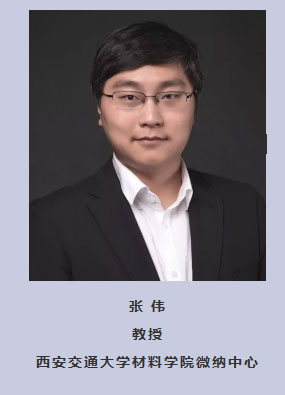学术报告 | 用于相变存储器和神经启发计算的材料设计
时间:9月23日(星期一)上午10:00-11:00
地点:电院5-214会议室
主讲:

2004-2010年在浙江大学物理系获得学士与硕士学位,并于2011-2015年在德国亚琛工业大学物理系获得博士学位并从事博士后研究。2015年5月回国全职工作,加入西安交通大学材料学院微纳中心CAMP-Nano以及金属材料强度国家重点实验室,先后任特聘研究员,教授。主要利用第一性原理计算和电子显微学实验研究相变存储器与忆阻器的工作机理。至今已在Science, Nat Mater, Nat Rev Mater, Nat Commun, Sci Adv, Adv Mater, PRB, APL等国际知名学术期刊上发表论文44篇。
报告内容:
Materials design for phase-change memory and neuro-inspired computing
Phase-change materials (PCMs) are leading candidates for non-volatile memory and neuro-inspired computing devices [1]. Development in this field is being boosted by the fundamental knowledge accumulated at the atomic and electronic level. In this talk, I will highlight two such examples. Firstly, I will show how to engineer the intrinsic nucleation properties of PCMs to achieve sub-ns writing speed via ab initio materials design [2]. The alloy design is based on density functional theory simulations to single out the optimal element Sc to incorporate into Sb2Te3. The geometrically-matched and high-strength ScTe bonds drastically reduce the stochasticity of the incubation process, and make it possible to reach a record-high writing speed, ~700 picoseconds, even in a conventional phase change memory device without the need of pre-programming treatment nor complex device design, while keeping the non-volatile feature at room temperature unchanged [2]. Secondly, I will focus on the critical issue for neuro-inspired computing – device variability: current phase-change devices have considerable noise and drift in electrical resistance that erodes the precision and consistency. I will present the design of phase-change heterostructures (PCHs) consisting of alternately stacked phase-change and confinement nanolayers to suppress the noise and drift, allowing reliable iterative RESET and cumulative SET operations for high-performance neuro-inspired computing [3]. The PCH architecture is amenable to industrial production as an intrinsic materials solution, without complex manufacturing procedure nor much increased fabrication cost.
References:
[1] W. Zhang*, R. Mazzarello, M. Wuttig, E. Ma, Designing crystallization in phase-change materials for universal memory and neuro-inspired computing, Nat. Rev. Mater. 4, 150-168 (2019).
[2] F. Rao*, K. Ding, Y. Zhou, Y. Zheng, M. Xia, S. Lv, Z. Song*, S. Feng, I. Ronneberger, R. Mazzarello, W. Zhang*, E. Ma, Reducing the stochasticity of crystal nucleation to enable subnanosecond memory writing, Science 358, 1423-1427 (2017).
[3] K. Ding, J. Wang, Y. Zhou, H. Tian, L. Lu, R. Mazzarello, C. Jia, W. Zhang*, F. Rao*, E. Ma*, Phase-change heterostructure enables ultralow noise and drift for memory operation, Science (2019) DOI: 10.1126/science.aay0291
